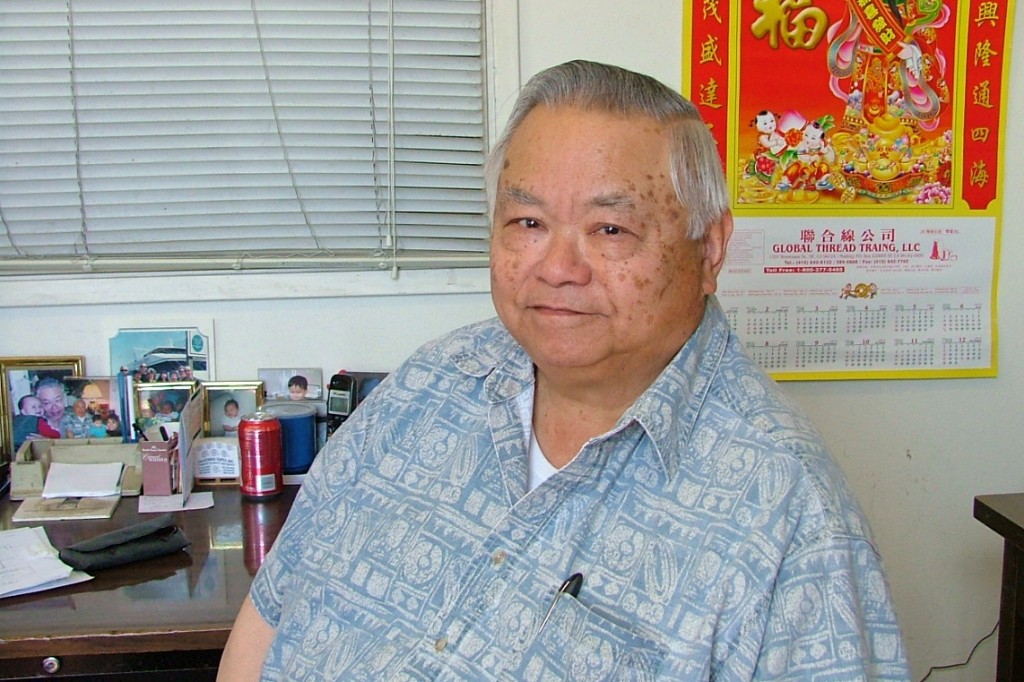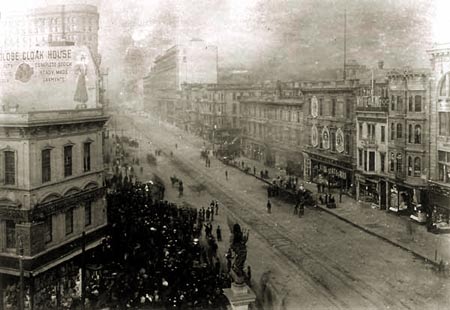behind the scenes: Meet Gary, cutting your fabric since before I was born.
Have you ever wondered how garments are actually made? Well, one of the first steps is that the pattern pieces have to be cut out of the fabric. When making a sample, this can be done piece by piece, but if you are making more than one garment with the same pattern pieces, you have to do it differently or you will go nuts.

The way to do this is to put all the pattern pieces for all the different sizes and pieces of a particular garment on one long piece of paper, this is called a 'marker'. Markers are like little puzzles, as you have to make sure you have the correct pieces, going the correct direction, for the correct number of sizes, colors and units ordered. (we'll talk to a marker maker in a future post!) A marker maker makes this magic marker and then you take it to the fabric cutter and they lay out all the fabric in stacks and put the marker on top and then cut out many pieces at a time. This can be done with a blade manually or electrically.
Sew shops often have a fabric cutting service in house, meaning all you have to do is drop off the marker and the fabric and they will cut it all out then push it through to sewing. But, due to many factors, especially the expense of having fabric cutters on staff, many sew shops do not have their own service in house and you have to find your own.
Meet Gary. Gary owns and operates a cutting service in San Francisco. He's been doing it for decades, and here's his story:
Gary was born in Chinatown in 1937. He went to Sacred Heart High School and then did one semester at SF State, but wasn't a fan and instead took night school at USF and studied accounting. He started out working delivery in a department store and then got into jewelry and engraving at a trophy store. He quickly learned how to engrave and five years or so later decided his to start his own business. What was it? A trophy store, naturally.
The first day his new trophy store was open, his wife went into labor. When his second child was born, it snowed in San Francisco. Gary says you could see the snow from the tops of the trees in Golden Gate Park. Crazy. Gary has three children, though the third one's birth wasn't as eventful as the first two.
Gary's sister-in-law used to have a sewing factory. One day Gary walked into the shop and asked the fabric cutter if he would show him how he cut the fabric. The fabric cutter said why, of course. It wasn't until several years later that Gary went back and actually learned how to spread and cut fabric from that friendly fabric cutter.
Gary went on to work for many different companies and was then asked to assist in a cutting room with 30 fabric cutters. I can only imagine how many long tables with lots of fabric cutters working out the shapes of hundreds and hundreds of yards of fabric were in that space, this was when local manufacturing was much more common. After a while, the sewing factory decided they'd rather just contract work to a fabric cutter (most likely to save money) and so they offered to sell the equipment to Gary. He took the opportunity and has been in business ever since.
All his work and employees come from personal referrals, as they have from day one. When you support local manufacturing, you are supporting people like Gary.
Gary is third generation Chinese-American from China and he lives in the Richmond district. He speaks English, Cantonese, and claims he can understand Spanish ;). His grandparents were here during the 1906 earthquake. Now that is history.
Gary's advice for manufacturers:
"If they are going into the garment industry, I would talk them out of it. It's a dinosaur."
Gary's advice for designers:
"Come up with an idea and pursue it. If you have an idea, go for it, but it is very tough. Money is not the problem, it's who you know, how to do it, and who can help you."
We interviewed Gary in his shop on Mission and S. Van ness. Gary has no computer and no email and writes out everything by hand. Thanks Gary for letting us interview you!

